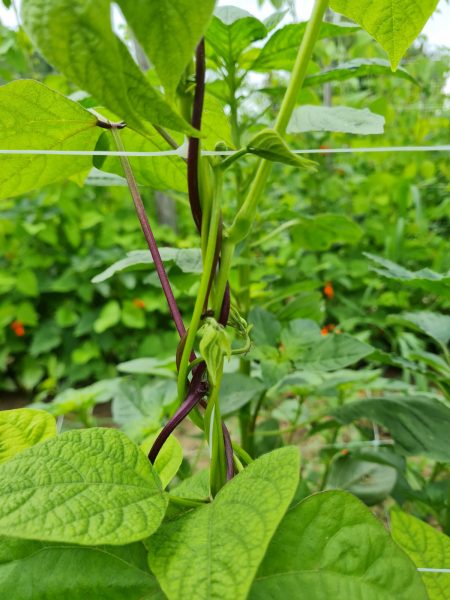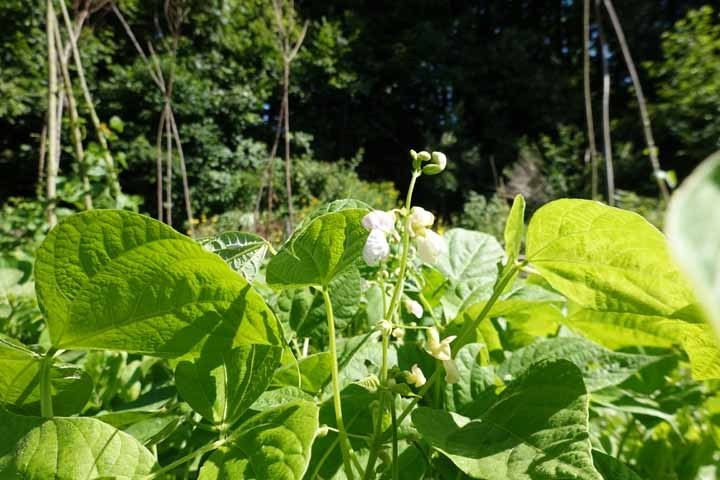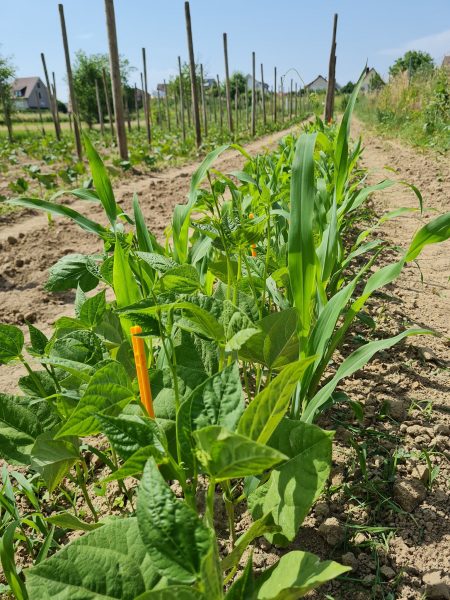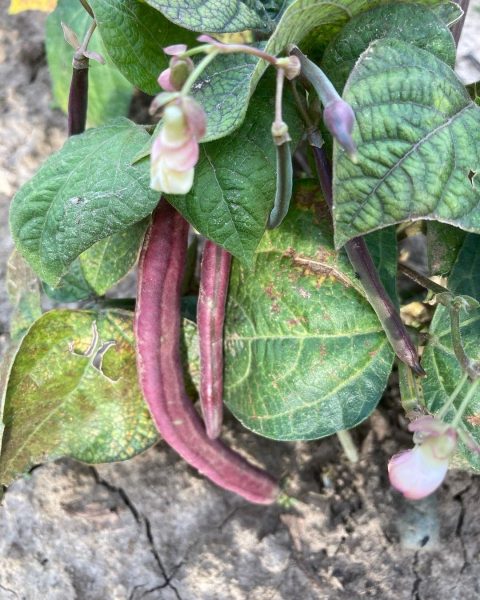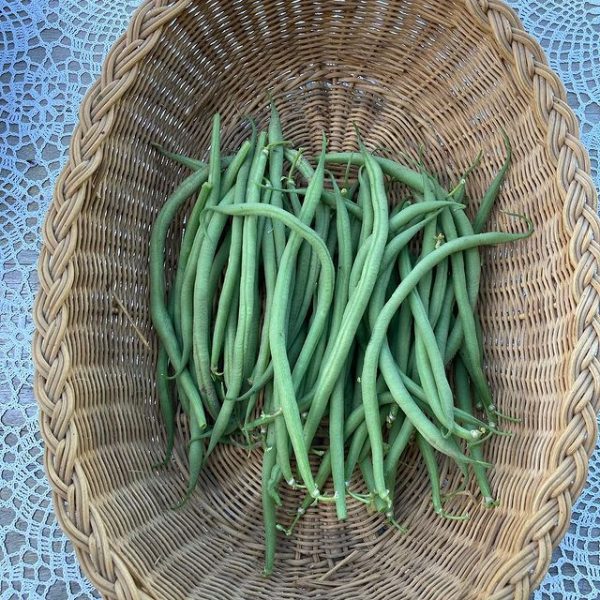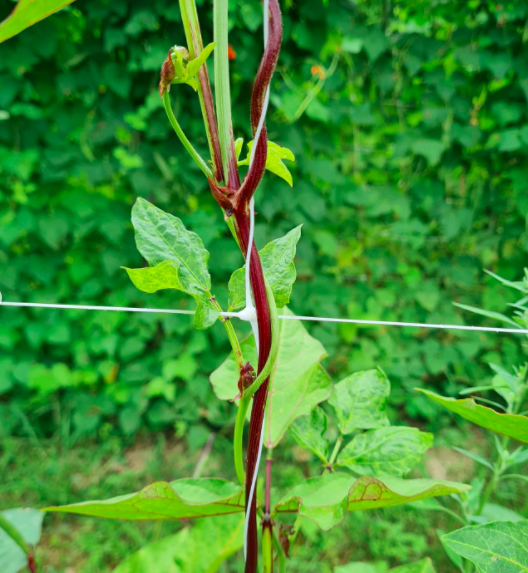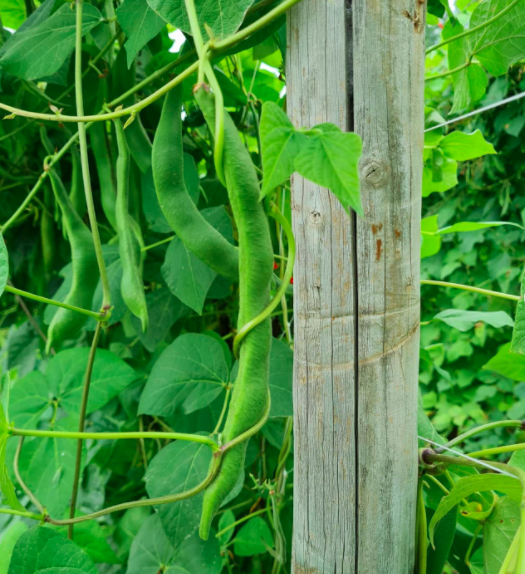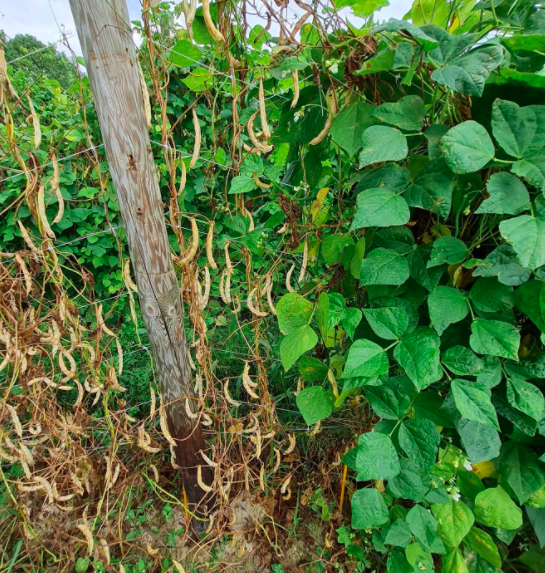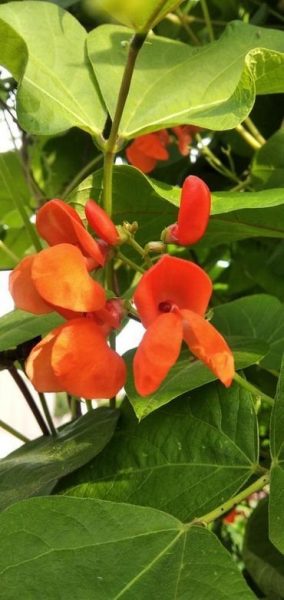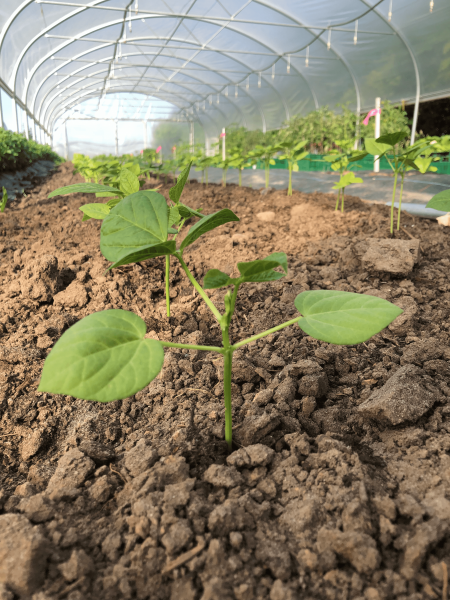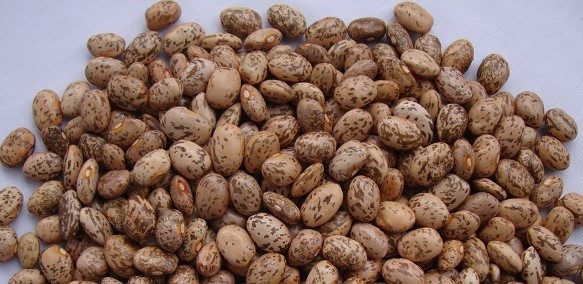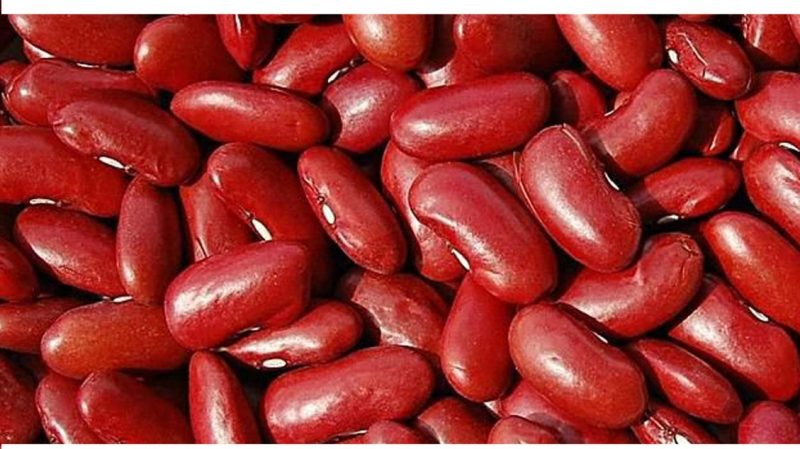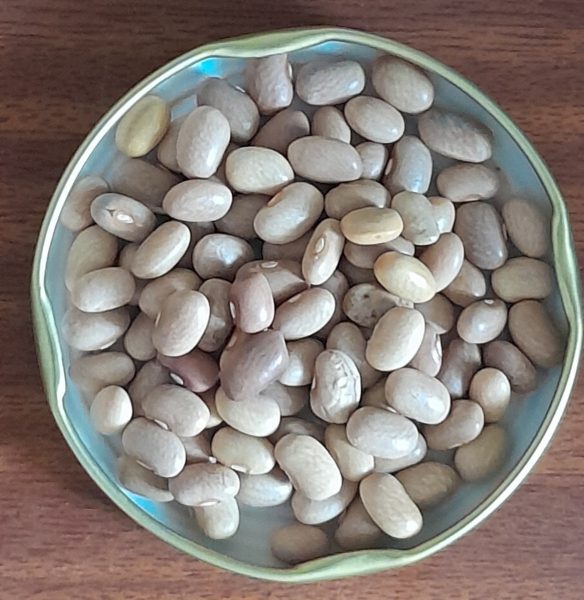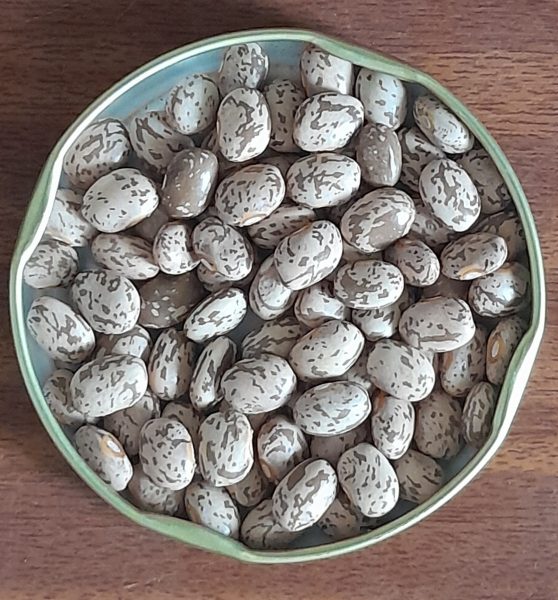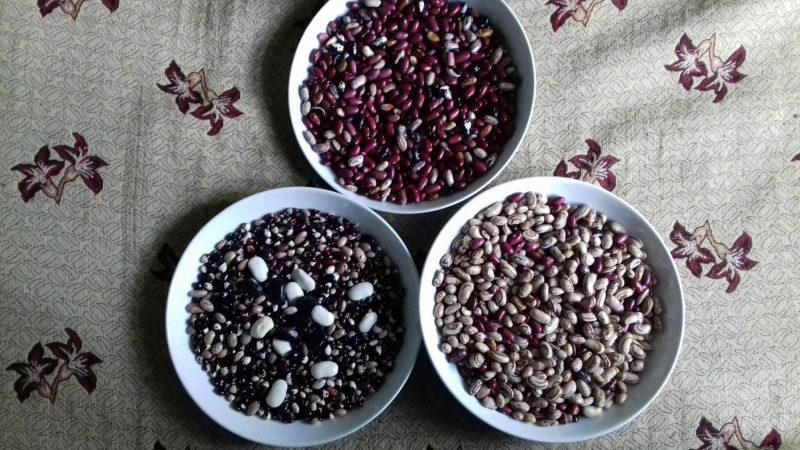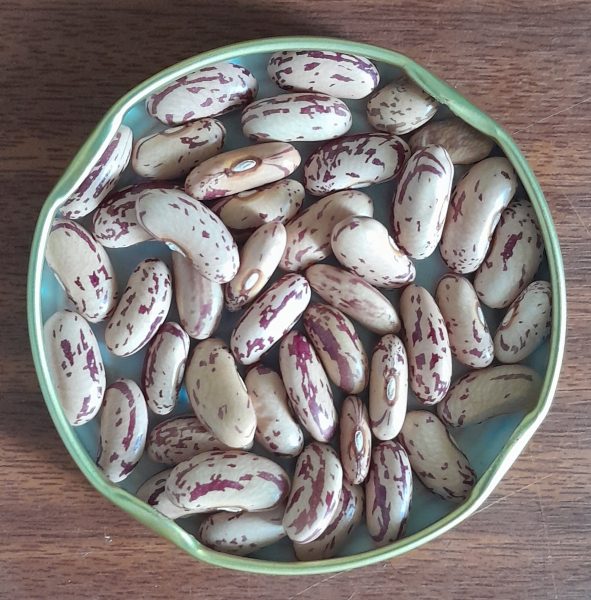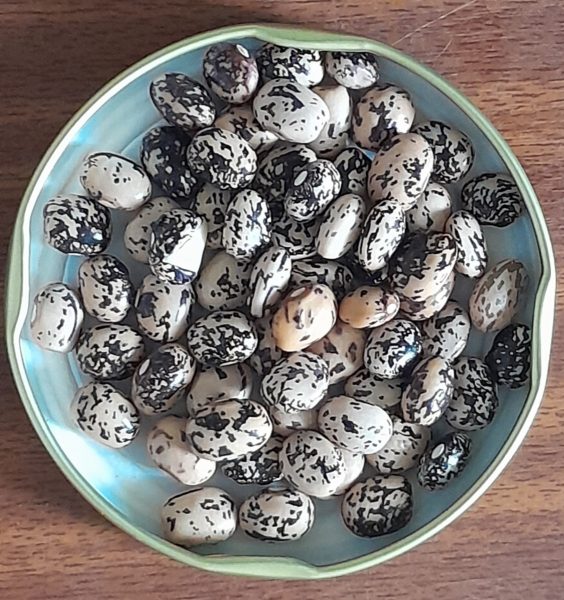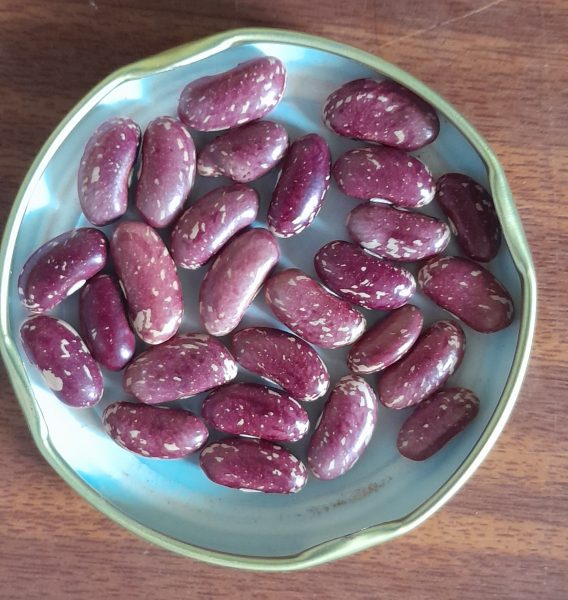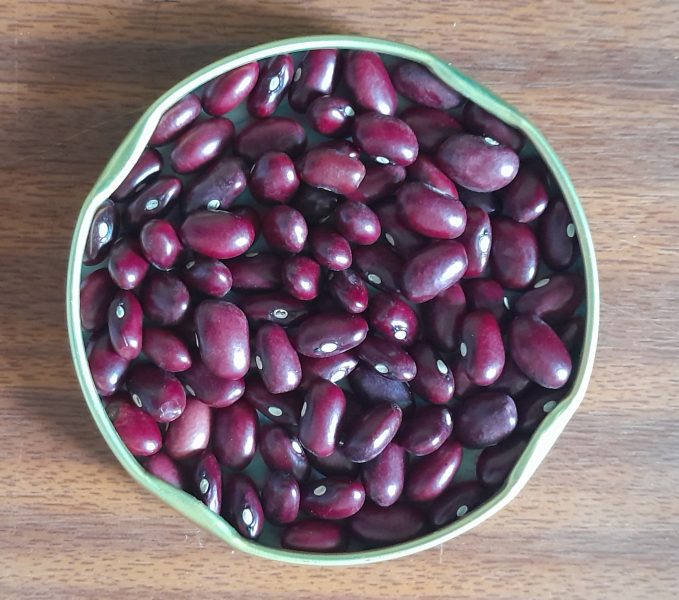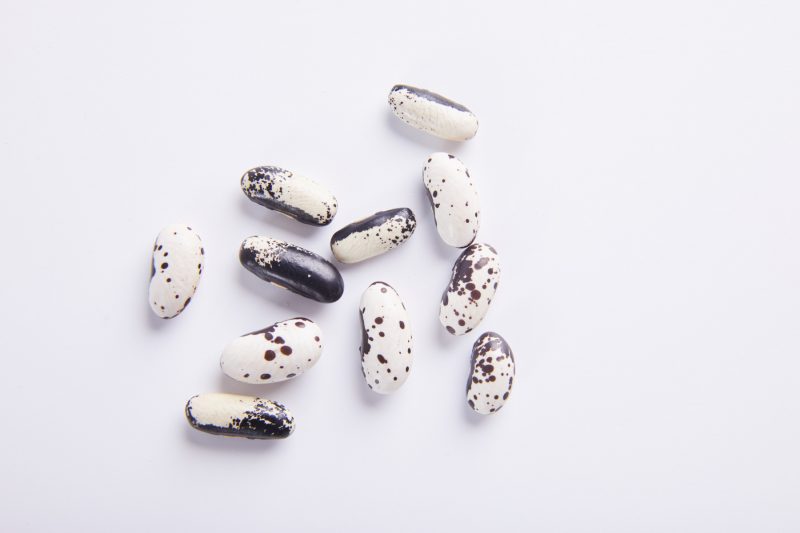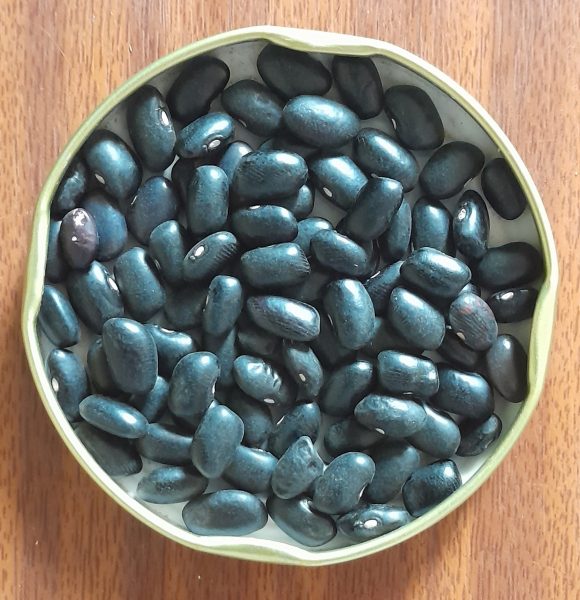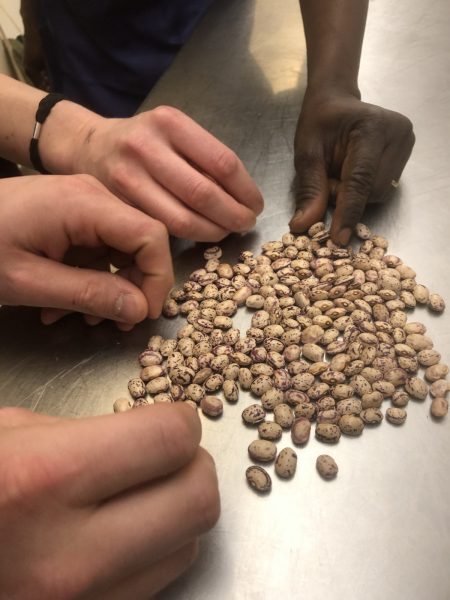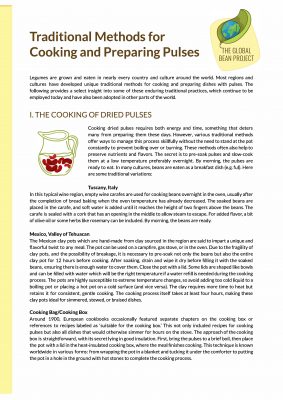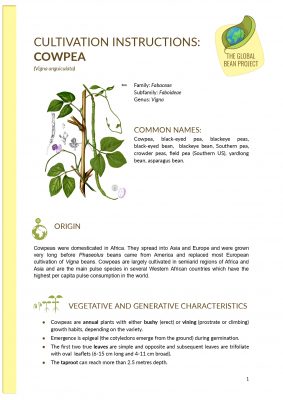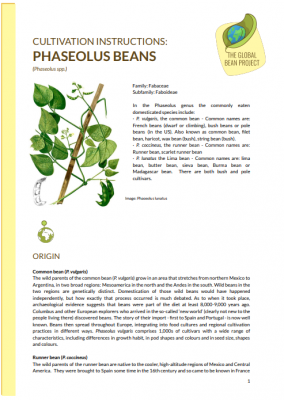(Phaseolus spp.)
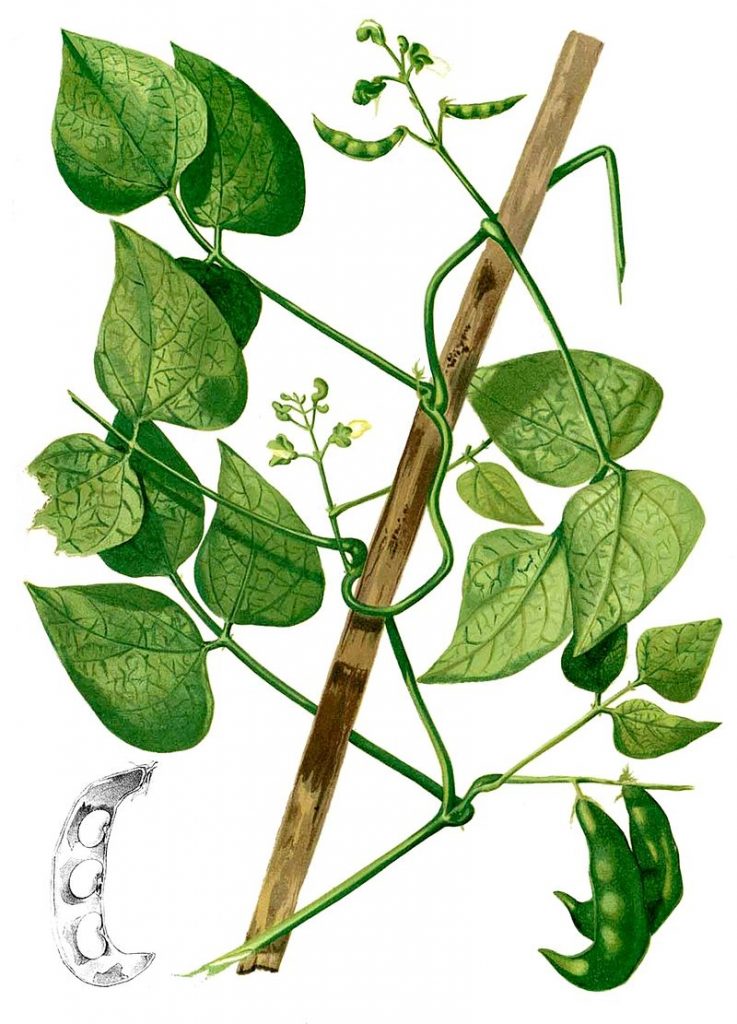
Family: Fabaceae
Subfamily: Faboideae
In the Phaseolus genus the commonly eaten domesticated species include:
- P. vulgaris, the common bean – Common names are: French beans (dwarf or climbing), bush beans or pole beans (in the US). Also known as common bean, filet bean, haricot, wax bean (bush), string bean (bush).
- P. coccineus, the runner bean – Common names are: Runner bean, scarlet runner bean
- P. lunatus the Lima bean – Common names are: lima bean, butter bean, sieva bean, Burma bean or Madagascar bean. There are both bush and pole cultivars.

ORIGIN
Common bean (P. vulgaris)
The wild parents of the common bean (P. vulgaris) grow in an area that stretches from northern Mexico to Argentina, in two broad regions: Mesoamerica in the north and the Andes in the south. Wild beans in the two regions are genetically distinct. Domestication of those wild beans would have happened independently, but how exactly that process occurred is much debated. As to when it took place, archaeological evidence suggests that beans were part of the diet at least 8,000-9,000 years ago. Columbus and other European explorers who arrived in the so-called ‘new world’ (clearly not new to the people living there) discovered beans. The story of their import – first to Spain and Portugal – is now well known. Beans then spread throughout Europe, integrating into food cultures and regional cultivation practices in different ways. Phaseolus vulgaris comprises 1,000s of cultivars with a wide range of characteristics, including differences in growth habit, in pod shapes and colours and in seed size, shapes and colours.
Runner bean (P. coccineus)
The wild parents of the runner bean are native to the cooler, high-altitude regions of Mexico and Central America. They were brought to Spain some time in the 16th century and so came to be known in France as the haricot d’Espagne. Runner beans prefer the cooler, wetter climate of Northern Europe and mountainous regions in Southern Europe.
Lima bean (P. lunatus)
The wild lima bean is common in Central America. Archaeological records suggest that two separate lines of domestication occurred; one in the Andes around 2000BC and one in Mesoamerica most likely around AD 800. The South American genotypes produce large seeds (Lima type), while the Mesoamerican varieties produce small seeds (Sieva type). The story of discovery by European explorers and their introduction to Europe is the same for all beans, but lunatus prefers hot and humid conditions, and so its introduction to Europe was more limited. Lima beans are, however, grown mainly in Spain. The Lima bean also travelled to the Philippines with the Manila galleons and is widely grown throughout Southeast Asia. It was also taken to Africa from Brazil, and is now the primary dried bean eaten there.
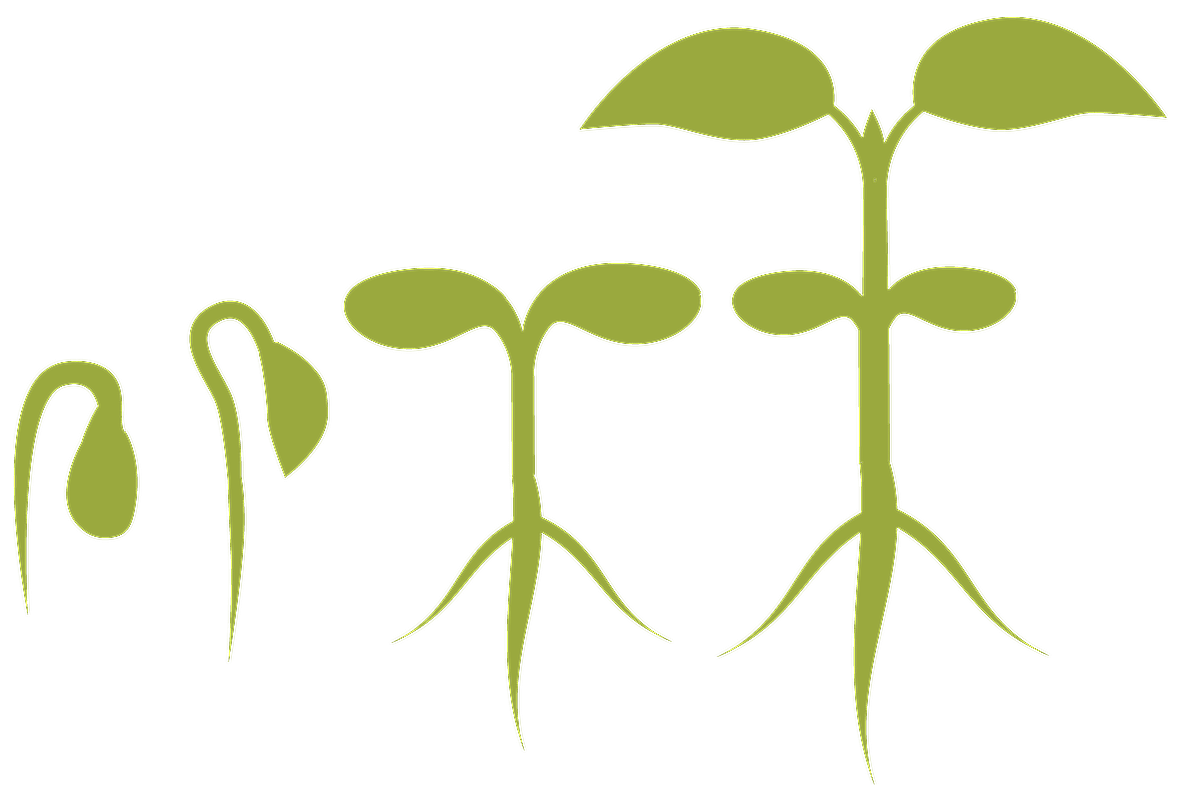
VEGETATIVE AND GENERATIVE CHARACTERISTICS
Common bean (P. vulgaris)
- Grown as an annual, can be perennial in tropical climate.
- Germination: optimum at 20º-30º C, with a minimum temperature of 15º C. Germination is poor if the soil temperature is below 10º C. Days to emergence – 8-10, but seeds may take 2 weeks to germinate in colder conditions.
- Plant height: The dwarf varieties form erect bushes 20-60 cm tall and climbing varieties form vines 2-3 m tall.
- Leaf: All varieties bear alternate green leaves which are divided into three, smooth-edged leaflets that are somewhat hairy, each 6-15 cm long and 3-11cm wide. Leaflet shapes vary, but usually have broad base and pointed tips.
- Stem: Trailing, climbing or erect and branching stems, depending on the variety.
- Flower: Self-pollinating. Depending on the variety, most flower 4-6 weeks after sowing.
- Root: A taproot-based root system with lateral roots typically within the top 15 cm of soil. The roots are colonised by rhizobium bacteria resulting in irregular root nodules.
- Pods: The pods vary in length and curvature (straight vs curved), cross section (diameter, flat, round) and colour (yellow, green, purple and mottled) before the seeds start to develop. The immature pods of some bean varieties are consumed as fresh green beans (snap beans, French beans) while the seed is still forming in contrast with fully-formed, shelled, semi-dry or dry beans that are consumed as mature seeds. Dried beans are first cooked to rehydrate them before cooking.
- Seeds: Seeds vary according to cultivar in terms of shape, size and colour. There are also variations in ratios of starch and protein content which affect their texture and taste and how they respond to cooking.
Runner bean (P. coccineus)
- Perennial: forming tubers, but frost tender, so it is usually grown as an annual. It is possible, however, to over-winter the tubers to replant in the Spring.
- Germination: optimum at 20º-30º C, with a minimum temperature of 15º. Germination is poor if the soil temperature is below 10º C Days to emergence – 8-10, but seeds may take 2 weeks to germinate in colder conditions.
- Plant height: The climbing varieties form vines 3m-3.5m tall. Some modern dwarf varieties have been bred and are best for growing in containers, as the long pods tend to spoil on the ground.
- Leaf: All varieties bear alternate green leaves which are divided in three, smooth-edged leaflets that are somewhat hairy, each 12-15 cm long. Leaflets have broad base and pointed tips.
- Stem: Vigorous vines that trail or climb. The dwarf varieties are erect with branching stems.
- Flower: Insect pollinated. Depending on the variety and climate, most flower 8-10 weeks after sowing.
- Root: Tuberous with lateral roots typically within the top 15cm of soil. The roots are colonised by rhizobium bacteria resulting in irregular root nodules.
- Pods: Flat green pods with a distinctive flavour and texture. In the UK runner beans are almost exclusively eaten at the green pod stage, and breeding has focussed on producing long, thin pods. Cultivars in Eastern Europe have focussed on producing large (usually white) beans and the pods are short and wide.
- Seeds: The seeds are 2-3cm long and the colour varies from white to black to violet black mottled.
Lima bean (P. lunatus)
- Perennial. Usually cultivated as an annual.
- Germination: optimum at 20º-30º C, with a minimum temperature of 15º. Germination is poor if the soil temperature is below 10º C Days to emergence – 8-10, but seeds may take 2 weeks to germinate in colder conditions.
- Plant height: The dwarf varieties form erect bushes 30-90cm tall and climbing varieties form tall vines 4-6m. ,
- Leaf: All varieties bear alternate green leaves which are divided in three, each 6-15 cm long and 3-11cm wide.
- Stem: Trailing, climbing or erect and branching stems, depending on the variety.
- Flower: self-pollinating. Depending on the variety most flower 4-6 weeks after sowing with white or violet flowers.
- Root: a taproot-based root system, with fleshy lateral roots.
- Pods: 5-12 cm long and containing 2-4 seeds.
- Seeds: Seeds vary according to the two main types in terms of shape, size and colour.

SOIL AND CLIMATE
Common bean (P. vulgaris)
- Well-drained loamy soil (no heavy clays or acidic soils).
- High water requirement during germination, drought-sensitive during flowering and seed formation, sensitive to water logging.
- Warm climate – sensitive to temperatures below 15°C and above 30°C during flowering.
- Airy sunny location.
Runner bean (P. coccineus)
- As with all Phaseolus, runner beans prefer an alkali soil and do not need extra nitrogenous fertilizer. Over-rich soils will result in leafy growth but few beans.
- High water requirement during germination, average moisture and not water logging.
- Warm climate – sensitive to temperatures below 10°C and above 30°C during flowering. Coccineus is more tolerant of cooler temperatures than other Phaseolus species.
- Sunny location.
Lima bean (P. lunatus)
- As with all Phaseolus, Lima beans prefer an alkali soil and do not need extra nitrogenous fertilizer. Over-rich soils will result in leafy growth but few beans.
- High water requirement during germination, thereafter average moisture and not water logging.
- Warm climate – sensitive to temperatures below 15°C. P. Lunatus requires a hot and humid climate.
- Sunny location.

CULTIVATION PRACTICES
Common bean (P. vulgaris)
- Sowing time: in northern Europe, seeds are usually sown under cover from April to May, in Central Europe they may be sown directly from mid-April to Mid-May, in the Mediterranean climate they are sown in the same period or in the beginning of July to avoid drought and heat during flowering.
- Soil temperature: minimum temperature 15º
- Sowing undercover: In regions where the growing season is quite short, (and especially useful in order to harvest dry beans ) seeds are sown in small individual containers for transplanting when there is no risk of frost.
- Distance between plants: distance depends on the variety. The average distance is 15 cm, further apart for larger bush beans. Two or three climbing beans can be planted at the base of a pole, but the poles should be spaced 40-45 cm apart.
- Distance between rows: the distance depends on the method of cultivation. Bush beans can be planted in a grid pattern with 15-20 cm in each direction, or they can be grown in rows with 30-40 cm between rows. Climbing beans are usually grown with 30-40 cm between rows, but spacing may depend on the arrangement of supports.
- Sowing depth: 4 – 5 cm, deeper if the soil is dry or there is a risk of mice or voles digging up the seeds.
Tips:
- For seeds sown initially under cover, the fibrous root system needs to be transplanted carefully to avoid disturbance.
- Climbing (pole) beans will need supports such as canes, wooden poles, ready-made metal structures or types of netting. Put the supports in place when the seeds are sown or the young plants transplanted.
- When climbing beans reach the top of their supports, they can be trimmed to encourage flowering and bean formation, and prevent the vines from becoming too tangled.
Runner bean (P. coccineus)
- Sowing time: in northern Europe, seeds are usually sown under cover from April to May, in Central Europe they may be sown directly from mid-April to Mid-May.
- Soil temperature: minimum temperature 15º
- Sowing undercover: Seeds are sown in individual containers – in deeper pots to allow for the vigorous root – for transplanting when there is no risk of frost.
- Distance between plants: Distance depends on the arrangement of supports. Two or three seeds can be planted at the base of a pole, but the poles should be spaced 40-60 cm apart. If transplanting plants, they are typically spaced at 30cm.
- Sowing depth: 5 -8 cm, deeper if the soil is dry or there is a risk of mice or voles digging up the seeds
- Germination: 7-14 days.
Lima bean (P. lunatus): As this bean variety needs more warmth and humidity than vulgaris or coccineus varieties, it must be sown undercover and in most regions of Europe it must be cultivated completely in a greenhouse or polytunnel. It grows tall and vigorously, so needs strong supports.
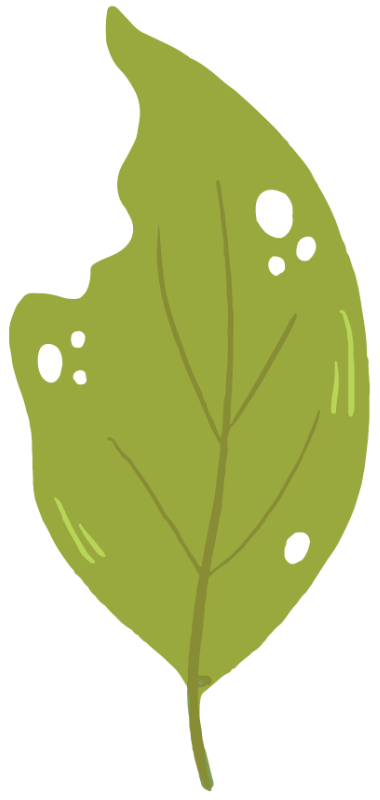
PESTS AND DISEASES
- Slugs and snails: eat the emerging shoots and young leaves. Starting the young plants in pots helps to protect them from being eaten. The usual non-chemical protections can be applied when they are transplanted.
- Aphids: small green or black aphids that are commonly found on all vegetables, typically on the new shoots and underside of leaves. Squashing them between fingers or washing them off are effective ways to reduce them. Many insects feed on aphids and promoting biodiversity in the garden will encourage aphid predators.
- Acanthoscelides obtectus: the bean weevil, is a species of beetle. They infest bean seeds, living most of their lives inside a single seed. They emerge from an exit hole in the seed in April to mate. In order to ensure bean weevils are not infesting beans that have been dried to store for food or seed, place completely dried seeds into a sealed bag or screw top jar, and place the bag/jar in a freezer. Leave for 3 days to kill any eggs, larvae or pupae. Transfer the beans to screw top jar or sealed bag and store in a dark, cool place.
- Bean Rust: Uromyces appendiculatus: a fungal disease affecting all Phaseolus beans and causes brown or black spore pustules on leaves, stems or pods. The rust thrives in wet weather conditions. It tends to develop later in the season and rarely affects the crop of beans, although severe infections will blunt the plant’s vigour. Pick off affected leaves, burn any severely affected plants and do not save seed from rust-infected plants.
- Halo Blight: Pseudomonas syringae pv. Phaseolica: Small spots on leaves, usually brown, with a characteristic yellow halo mark around them. There are no remedies so destroy infected plants and do not save seed from blight infected plants.
- Sclerotinia: is a fungal disease that causes fluffy moulds on rotted stems and large grey and black bodies (sclerotia) within the stems. There are no remedies, so destroy affected plants as the sclerotia will persist in the soil. Practise crop rotation.
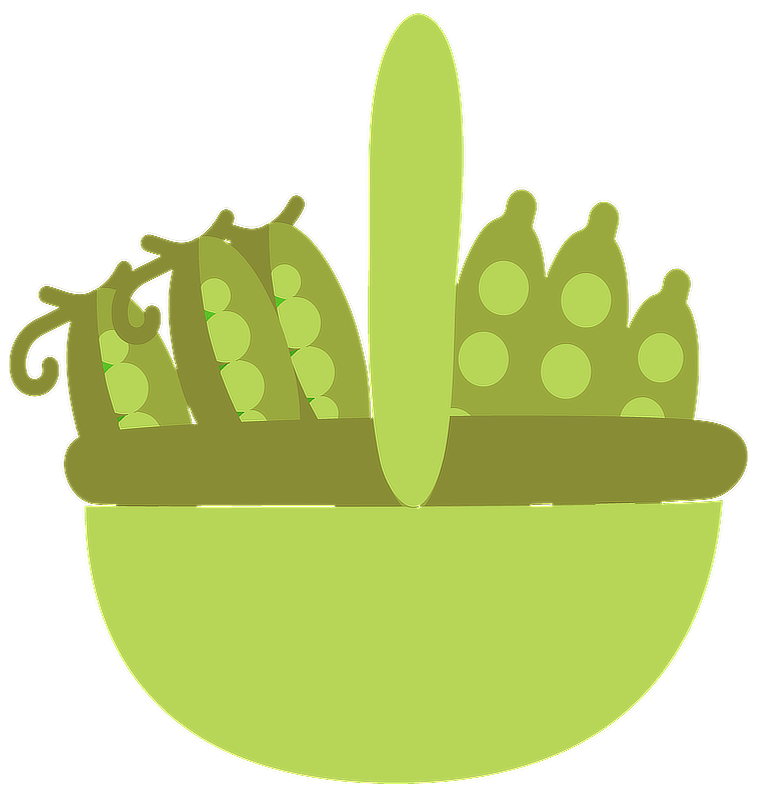
HARVEST AND USAGE
- Green pods: Many beans, particularly the more modern cultivars, can be eaten at the green, French bean or snap bean stage.
- Immature beans: When they have swelled, beans can be shelled to cook and eat fresh. The beans are good to eat at the stage when they start to dry: demi-sec.
- Mature seeds: In some climates the beans can be left to dry on the plant and harvested when the whole plant is dry. In the Mediterranean dry beans can be harvested between July and the beginning of August, and in autumn if sown in July. In Central Europe the harvest is possible between the end of August and mid-October. In Northern Europe, some beans may dry on the plants or they have to be picked and dried indoors.
- Drying Beans for storage: The beans need to be thoroughly dried before storing in airtight containers in a cool, dry place.
- Dried Beans: need to be soaked to rehydrate before cooking them.

FURTHER INFORMATION
Common bean (P. vulgaris)
- The protein and carbohydrate content of beans varies according to cultivar – but all beans are an important source of fibre, vitamins and minerals.
- Some types of bean, kidney bean specifically, contain lectin which is a toxin. The toxin is deactivated by boiling hard for around 10 minutes. It is good practice with all beans, to first boil hard before reducing the heat to a gentler boil.
Runner bean (P. coccineus)
- In high temperatures (over 90º and in drought conditions, runner bean flowers may not set).
- Unlike P. vulgaris, the cotyledons stay in the ground during germination (hypogeal germination).
- In Greece, cultivars of the runner bean with white flowers and white beans are known as fasolia gigantes. They are grown under protective law in the mountainous regions of Northern Greece. In Austria and Bulgaria the coloured beans are dried and served in regional dishes.
- All parts of the runner bean can be eaten – the young leaves, the flowers, the pods and even the tubers.
- Runner beans easily cross-pollinate so if seed will be saved, they must be isolated if the seed is to come true.
- Runner beans are pollinated by honey bees and long tongued bumble bees. Short-tongued bees do not pollinate the flowers because they cannot reach the nectar from the front and so nip a hole in the base to get access. Sufficient bees usually visit the flowers to pollinate and for a good crop to set.
- Insect pollination results in cross-pollination, so for seed saving, individual coccineus varieties should be grown at a distance of around 500m from any other variety.
Lima bean (P. lunatus)
- The pods are tough and not eaten.
- No beans should be eaten raw, but this applies particularly to lima beans as they contain glucosides, a poison. Cooking – with changes of cooking water – destroys these poisons.
TIMELINE
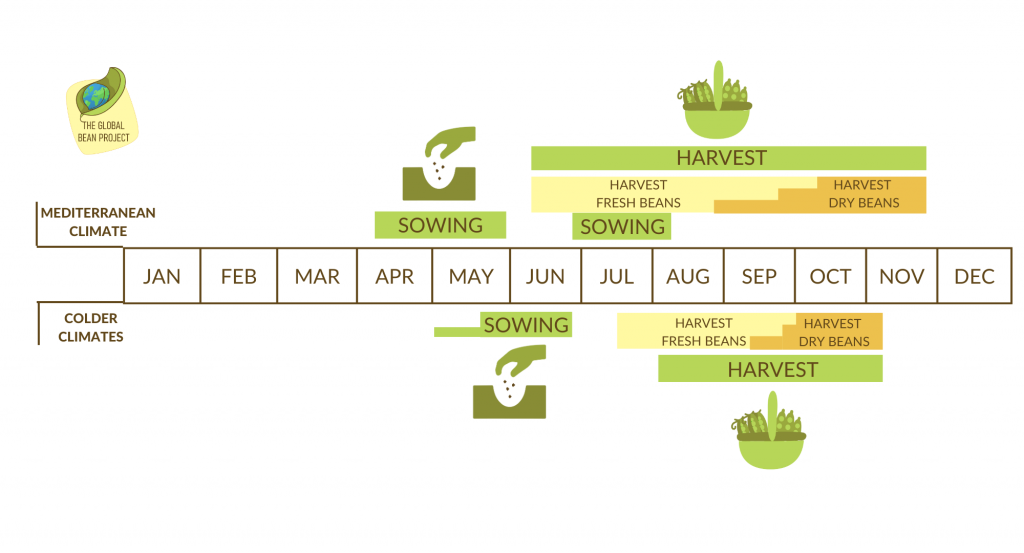
The above timeline refers to the Central Europe zone.
Recipes
Find recipes with Phaselous beans on our recipe page!
Youtube ShowGardens videos
The Global Bean Show Garden videos present the cultivation and uses of legumes in gardens and fields. Each “Show gardener” sends us a series of videos showing one or more legume species throughout their growing season. Some of our videos give an overview of specific aspects of legume cultivation. Discover here the videos about beans



